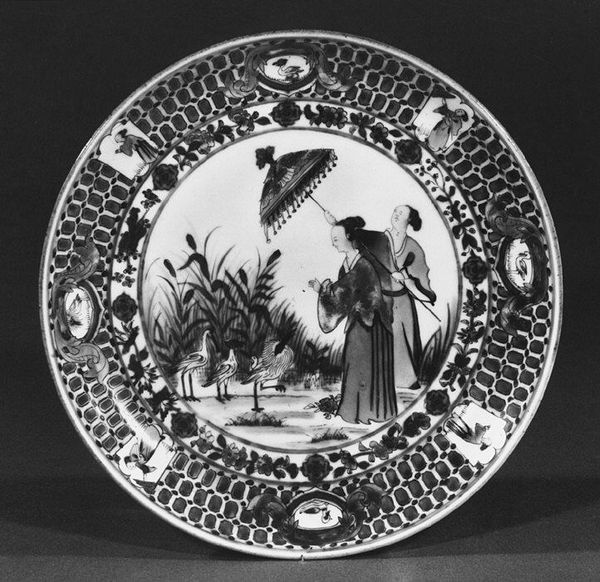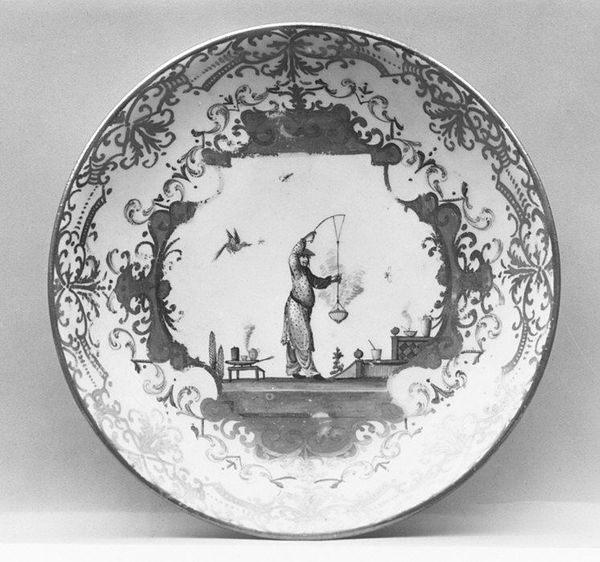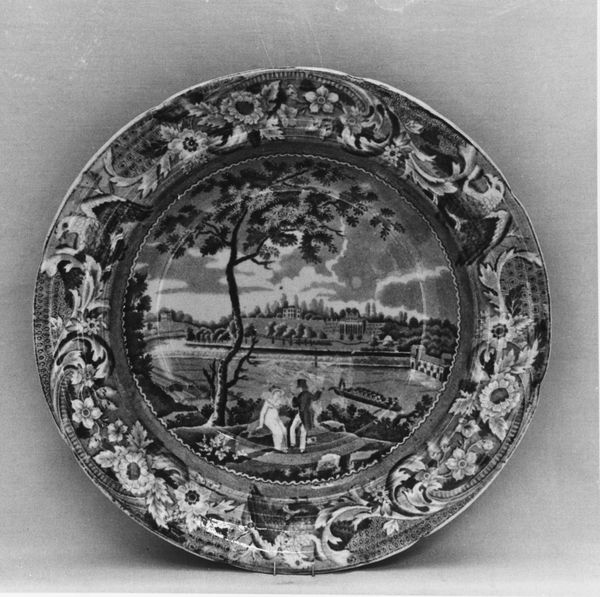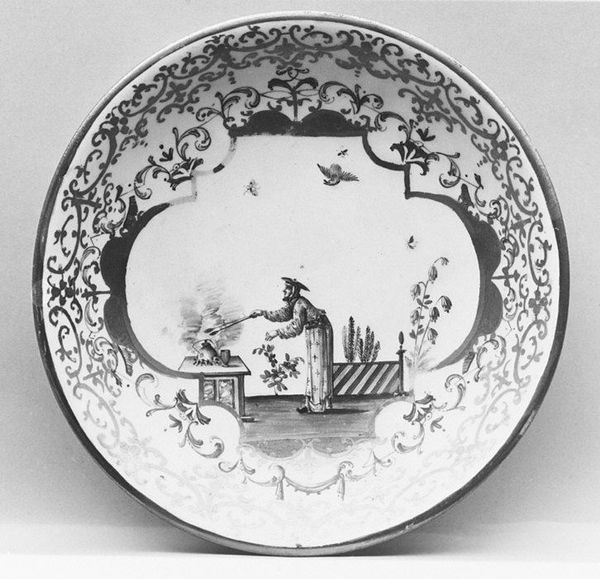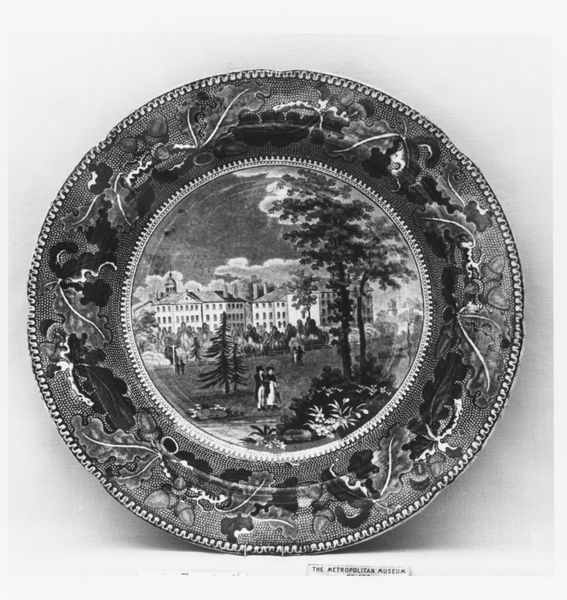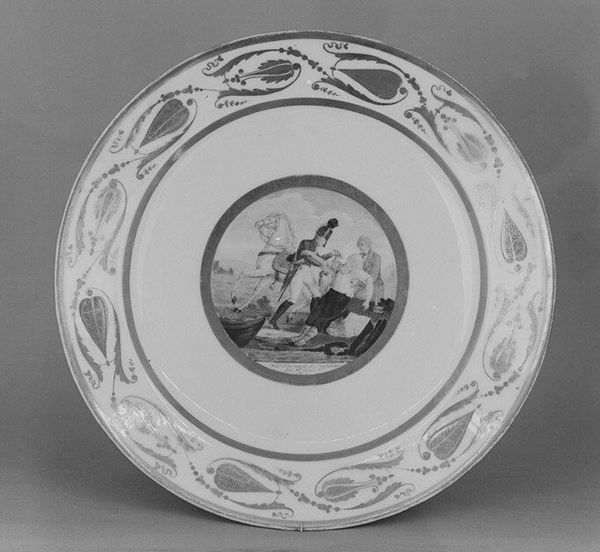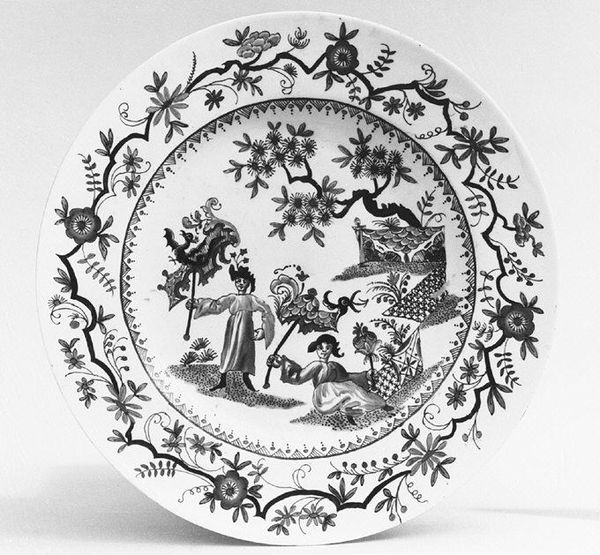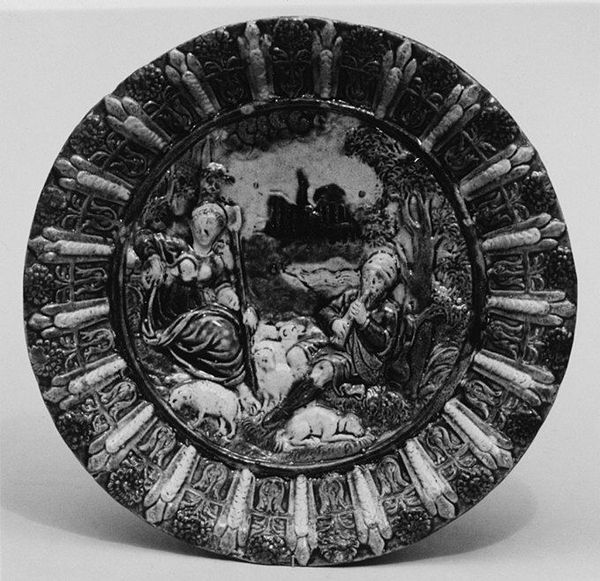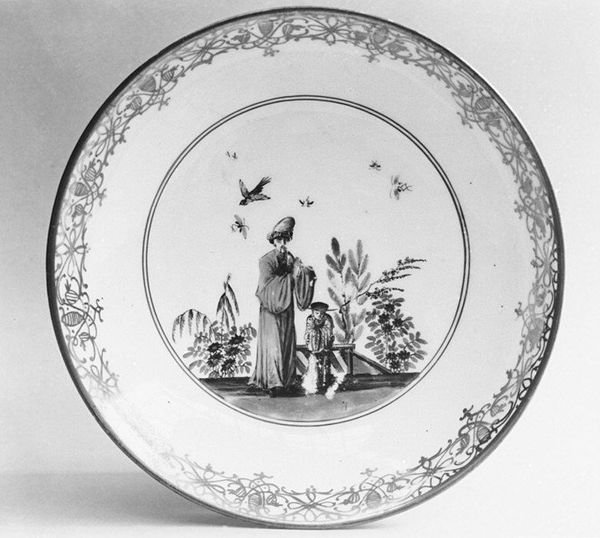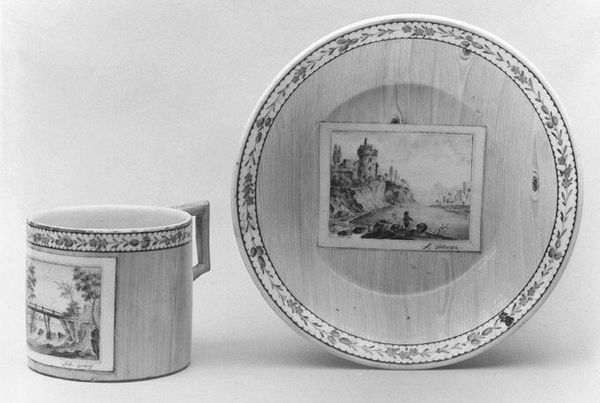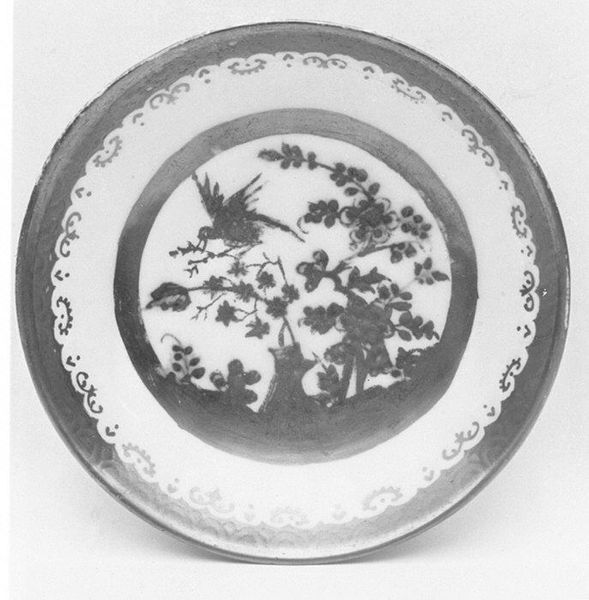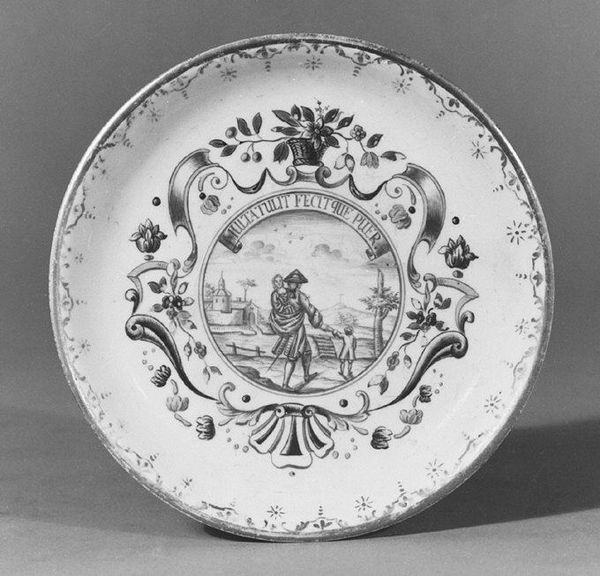
Dimensions: Diameter: 9 1/2 in. (24.1 cm)
Copyright: Public Domain
Editor: Here we have a porcelain plate made by Nymphenburg Porcelain Manufactory around 1775 to 1785, currently held at the Metropolitan Museum of Art. What strikes me is how the artist merges a detailed landscape painting with the everyday functionality of a plate, almost creating a window onto another world. What's your take on this piece? Curator: It's such an unexpected juxtaposition, isn't it? It’s as if a tiny canvas landed perfectly onto a faux bois stage! The rococo period loved blurring the lines between art and life, and here, they're literally plating it up for us. It whispers, or maybe shouts, of a playful disregard for high and low art. Do you notice how the border, though floral, complements the central landscape's serenity? Editor: Yes, the floral border almost seems like a frame enhancing the landscape! It creates an intriguing contrast, juxtaposing the "natural" landscape within a distinctly artificial, decorative frame. Does that have to do with any symbolism? Curator: Exactly! Think about it. We've got this rustic, almost idealized landscape placed within an object of refinement, suggesting the longing for simpler, pastoral pleasures amid aristocratic life. Plus, it probably sparked delightful conversations at dinner parties – can't you imagine? What sort of "pastoral pleasures" does that landscape invite you to explore, though? Editor: I suppose, seeing people finding a break in the landscape and resting next to the bridge to pause. I never considered a plate could speak so much. It's fascinating how a practical object can become a canvas for storytelling and social commentary. I'll never look at decorative art the same way! Curator: Indeed. Everyday objects, turned into canvases, become portals to understanding a culture's aspirations and anxieties. Now, if only this plate could tell us what delicacies it once held!
Comments
No comments
Be the first to comment and join the conversation on the ultimate creative platform.
